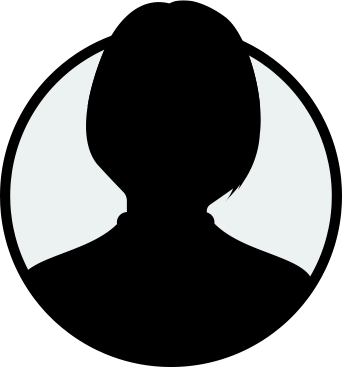We've spoken to elite athletes using Precision Fuel & Hydration products about how they've adapted their training during lockdown and it was interesting to see that several had added yoga to their training plan to help with flexibility, strength and mindfulness.
Qualified yoga teacher, PT and fitness instructor, Nicole Allen, has written a special guest blog to help us understand the benefits of yogic breathing and provided us with two exercises to practice...
Introduction to yoga and breathing techniques
I've deepened my connection to yoga over the years and it's a practice that's particularly important for me as I live with a genetic illness called Cystic Fibrosis (CF), which affects my lungs, digestion and immune system.
I know Precision Fuel & Hydration have a close connection with CF and the CF Trust, and I was delighted to be asked to write a blog about how yoga can help athletes of all backgrounds.
The movement and breathing involved in yoga has an important impact on my life with CF as specific breathing techniques (pranayama) help increase lung expansion, intake of oxygen, and provide a better understanding of my physical make-up.

What is Pranayama?
Prana in Sanskrit means 'vital energy' or 'life force', and yama means 'control'. Ayama is defined as 'extension' & ‘expansion'.
Pranayama techniques utilise breathing to influence the flow of energy in the 'nadis' (energy channels) through the body, enhancing and regulating past the normal boundaries to attain a higher state of vibratory energy. In the most basic of terms, it helps increase lung capacity.
Nadi Shodhana (nad-ee shod-han-na)
Nadi Shodhana is a pranayama technique and focuses on ensuring the whole body is nourished through an extra supply of oxygen. It lowers levels of stress and anxiety (which can be helpful at a time like this) by unblocking, balancing and harmonising our 'pingala nadis' (our energy channels).
This might sound quite complicated but let's take a look at how to put these techniques into practice. It takes time to develop a good understanding of pranayamas and it's important to persist with the practice over time.
How to practice
- Hand position: Hold your right hand in front of you, resting your index and middle finger in the palm of your hand. The thumb above the right nostril, and ring finger above the left nostril. These two fingers control the flow of breath by alternately pressing one nostril to block the air flow, then changing to the other
- Close the right nostril with the thumb and inhale through the left nostril counting mentally from 1-4 until inhalation ends. This can be the start of a basic count and don't strain
- Close the left nostril and open the right nostril, and exhale for a count of 1-4. The inhale and exhale should be the same count
- Keep right thumb off and inhale back into the left side. End by closing the right nostril, opening the left and exhale down the left
- This is one round and effective practice should involve 8-10 rounds
Breathing should be silent in nadi shodhana, and shouldn't be forced or restricted. Focus on using the chest and diaphragm muscles.
Over time you can increase the length of inhalation and exhalation, changing the ratio to 1:2. Continue to extend the count up to 10:20.
This ratio establishes a calming rhythm for the brain and heart, assisting the cardiovascular and nervous systems and reducing stress-related conditions.
https://www.instagram.com/p/By7RC9nFaXl/
Meditation and benefits
When I’m speaking about the topic of mindfulness, people generally imagine some free spirit zoning out and being taken to 'another place'.
How often have you heard someone say "have you tried to meditate?" and you just think "no I probably won't try because I don't know how."
Meditation helps manage our mental and emotional state. The transformative potential of meditation shouldn’t be underestimated.
Studies have proven that meditation has physiological effects on the brain. Researchers found that the part of the brain that regulates stress and anxiety shrinks when meditation is practised consistently.
Meditation can benefit everyone. It can help you deal with an upcoming hospital admission or if you’re currently training for a triathlon or marathon.
Meditation can allow you to stay focused on the present moment and not overthink the long term future. Meditation can teach you to recognise thoughts that may be harmful or self-defeating.
The idea is that as you gain greater awareness of your thought habits, you can steer them toward more constructive patterns.
One of the meditation breathing techniques that’s helped me understand my lungs better is Yogic Breathing.
Practice yogic breathing
The purpose is to gain control of the breath, correct poor breathing habits and increase oxygen intake. It can deepen natural breathing patterns. You can sit in a comfortable position or lie flat on your back.
- Start by inhaling slowly and deeply into the stomach, allowing the abdomen to expand fully, pressing your belly button out
- Gently start to expand the lungs, then into the upper part of the lungs around the base of the neck. Shoulders shouldn’t move, the body should be relaxed
- This completes 1 inhale which should be performed as smoothly as possible in one continuous movement
- As you exhale, allow the chest to contract downward. The diaphragm to be pushed upward towards the chest
- Without strain, try and empty as much of the lungs as possible before moving down to the abdomen, slightly pulling the abdominal wall near to the spine. The entire movement should be flowing gracefully. This completes one yogic breath
- Perform 5-10 rounds
This can be slowly increased to 10 minutes daily. Inhale for 4, exhale for 6.
I really hope this information has been of help to you, and you can incorporate these breathing exercises into your regime. Personally, having a lung condition has not stopped me from being defeated, and I have felt a significant improvement when completing these exercises daily.
